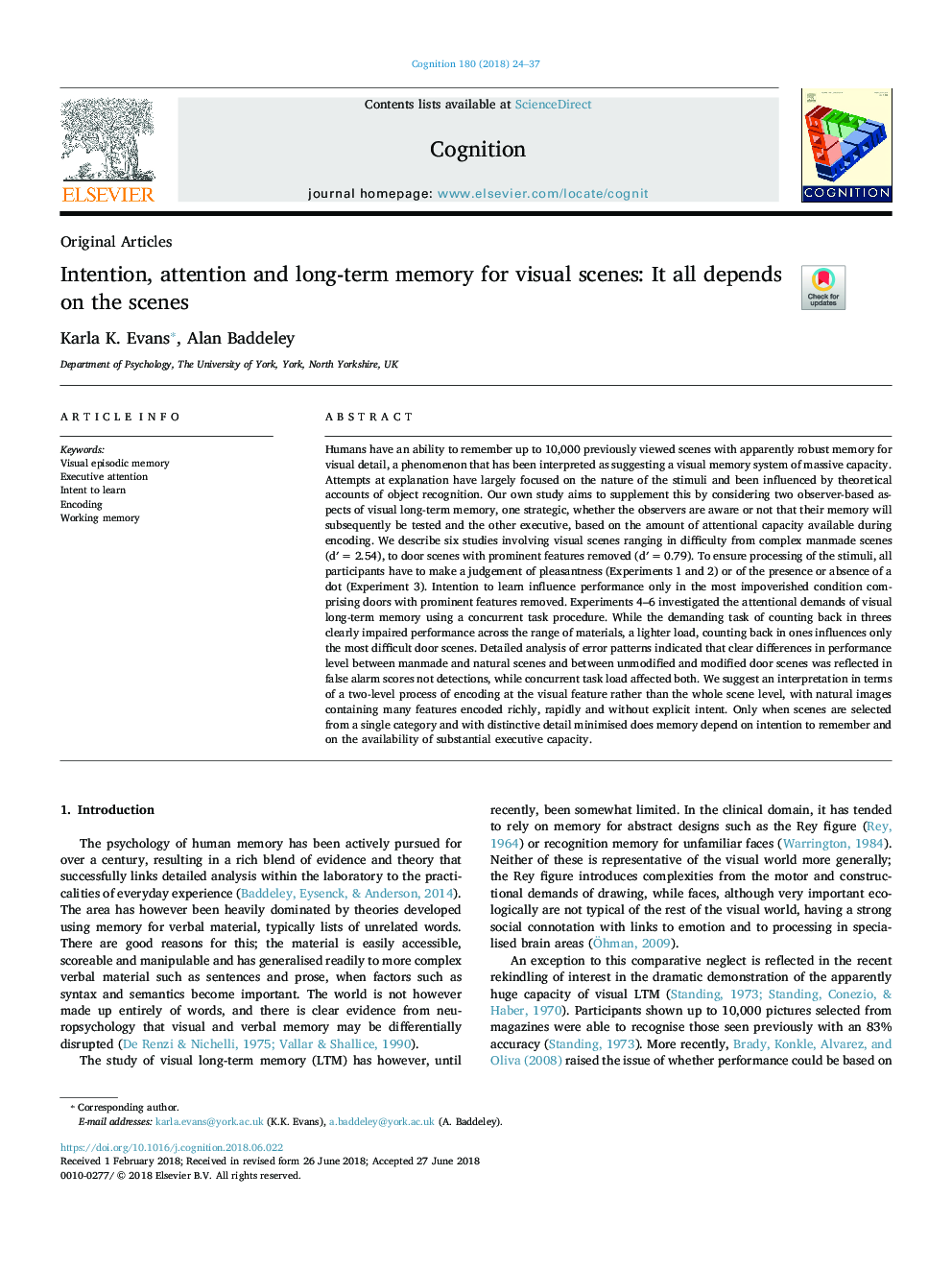| کد مقاله | کد نشریه | سال انتشار | مقاله انگلیسی | نسخه تمام متن |
|---|---|---|---|---|
| 7285026 | 1474087 | 2018 | 14 صفحه PDF | دانلود رایگان |
عنوان انگلیسی مقاله ISI
Intention, attention and long-term memory for visual scenes: It all depends on the scenes
ترجمه فارسی عنوان
هدف، توجه و حافظه بلند مدت برای صحنه های بصری: این همه به صحنه ها بستگی دارد
دانلود مقاله + سفارش ترجمه
دانلود مقاله ISI انگلیسی
رایگان برای ایرانیان
کلمات کلیدی
حافظه اپیزودیک بصری، توجه اجباری، قصد یادگیری، رمزگذاری، حافظه کاری،
موضوعات مرتبط
علوم زیستی و بیوفناوری
علم عصب شناسی
علوم اعصاب شناختی
چکیده انگلیسی
Humans have an ability to remember up to 10,000 previously viewed scenes with apparently robust memory for visual detail, a phenomenon that has been interpreted as suggesting a visual memory system of massive capacity. Attempts at explanation have largely focused on the nature of the stimuli and been influenced by theoretical accounts of object recognition. Our own study aims to supplement this by considering two observer-based aspects of visual long-term memory, one strategic, whether the observers are aware or not that their memory will subsequently be tested and the other executive, based on the amount of attentional capacity available during encoding. We describe six studies involving visual scenes ranging in difficulty from complex manmade scenes (dâ²â¯=â¯2.54), to door scenes with prominent features removed (dâ²â¯=â¯0.79). To ensure processing of the stimuli, all participants have to make a judgement of pleasantness (Experiments 1 and 2) or of the presence or absence of a dot (Experiment 3). Intention to learn influence performance only in the most impoverished condition comprising doors with prominent features removed. Experiments 4-6 investigated the attentional demands of visual long-term memory using a concurrent task procedure. While the demanding task of counting back in threes clearly impaired performance across the range of materials, a lighter load, counting back in ones influences only the most difficult door scenes. Detailed analysis of error patterns indicated that clear differences in performance level between manmade and natural scenes and between unmodified and modified door scenes was reflected in false alarm scores not detections, while concurrent task load affected both. We suggest an interpretation in terms of a two-level process of encoding at the visual feature rather than the whole scene level, with natural images containing many features encoded richly, rapidly and without explicit intent. Only when scenes are selected from a single category and with distinctive detail minimised does memory depend on intention to remember and on the availability of substantial executive capacity.
ناشر
Database: Elsevier - ScienceDirect (ساینس دایرکت)
Journal: Cognition - Volume 180, November 2018, Pages 24-37
Journal: Cognition - Volume 180, November 2018, Pages 24-37
نویسندگان
Karla K. Evans, Alan Baddeley,
